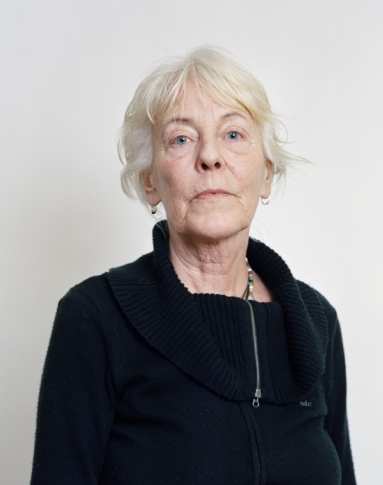Petra Stavast
Petra Stavast (* 1977 in Tiel, Netherlands). She commenced the photographic project “Ramya” in 2002, when the photographer moved into Ramya’s house and used the camera as a means of communication. Stavast resumed and completed the long-term project after Rayma’s death (2012) in 2014, when Ramya’s private archive took Stavast to the remains of a former commune set by followers of the Bhagwan (Osho) in the no-man’s-land of Oregon, USA. This and many other stories together constitute Stavast’s biography of Ramya: a record of an unusual life.
Interview with Petra Stavast
The topic of the festival is “Innere Sicherheit – The State I Am In – which includes political aspects of “Homeland Security” but also very personal, private aspects. How do you relate to these issues? How do you understand your work in this context?
In the way I approach it, the theme and the project have several connections. For one, the rise and fall of the Rajneeshpuram commune (1981 - 1985, Oregon, USA) and that of the ‘Bhagwan (Osho) imperium’ in general coped with both threats from outside and inside. Eventually, those that were developed from within were the ones that determined the downfall. On an abstract level, same goes for Ramya, where threat equals temptation and weakness and she too was in a constant struggle with her inner self.
Do you think it is possible to escape from society or social relations?
Well, any relation with any person for me relates to that so how would it be possible? I guess by cutting any contact with any other human being. For sure that is possible, on a practical level I mean but then, secondly, forgetting or at least not being bothered by any thought on any prior or future relationships (which I think, in order to reach full social escape, is a necessity too), I doubt it.
And how do you judge the role of autocratic leaders?
To judge the role of autocratic leaders in general is a question way too big for me, or at least to write something about it: history has proven mainly very bad things come out of it. The definition of the term (repression of opponents, self-enrichment of the leader, being the opposite of a democracy, leaders are seemingly chosen democratically but will soon condemn these values etc.) can be copied on Rajneeshpuram too. At least regarding to opponents’ stories. Because even after many decades, many events and following Bhagwan's dead, Sanyassins (followers of Bhagwan) all over the world worship their leader still and will state only good came out of it. In my work, I’ve tried to keep a neutral perspective by giving voice to people that represent both sides, all speaking from their very personal experiences. Given their stories, I feel I’m in no position to judge.
What was your artistic approach to “Ramya”?
Our relationship and my artistic approach are in concordance. In a way, the whole ‘project’ was there before I recognized it. Her personal archive and mine together is the project. Only thing I did artistically is to untangle the series of events and the material that derived from each event, developed story lines into what I consider to be my version of a biography of Ramya.
While gathering information and going through the material, I started thinking in separate ‘story-lines’, ‘chapters’. So a book as a document fits the material very well but some parts of the story where better to be told in other media. Contemporaneously, I’ve made an exhibition where video, original pieces and enlargements tell some parts of the story that aren’t in the book. In answer to the question, the process of untangling large amounts of complex material has my interest, finding a suited way/medium to bring across each part of the story at its best – my work mainly consists of attempts to do so.
